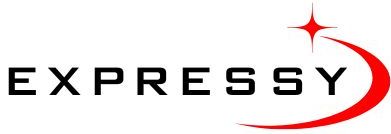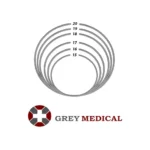The global infectious disease molecular diagnostics market, valued at USD 35.87 billion in 2023, is experiencing rapid growth due to various key factors, including technological advancements in diagnostic devices, a rising geriatric population, and an increase in the incidence of infectious diseases worldwide. This market, which covers diagnostic tools used to detect pathogens at the molecular level, is forecast to expand at a CAGR of 3.20% during the period from 2024 to 2032, potentially reaching USD 47.62 billion by 2032.
With the integration of cutting-edge technologies like polymerase chain reaction (PCR), next-generation sequencing (NGS), and CRISPR, molecular diagnostics are becoming increasingly crucial in detecting infectious diseases at early stages. This shift is largely driven by the need for accurate, rapid, and non-invasive diagnostic tools, especially in light of the ongoing global health challenges posed by diseases like COVID-19, tuberculosis, and various viral infections.
This blog post provides an in-depth look at the infectious disease molecular diagnostics market, including market share, trends, growth drivers, regional outlooks, segments, and forecasts. It also explores the lasting impacts of the COVID-19 pandemic on the market.
Market Overview and Share
The infectious disease molecular diagnostics market consists of diagnostic tools and technologies designed to detect pathogens responsible for various infectious diseases, from bacterial infections to viral and fungal diseases. The major players in this space include companies like Roche Diagnostics, Abbott Laboratories, Thermo Fisher Scientific, and BioMérieux, which are pioneering the integration of molecular diagnostics in clinical settings.
Key Market Drivers
- Rising Geriatric Population: With an ageing population, the risk of infectious diseases, including respiratory infections and other age-related ailments, has escalated. Elderly individuals are more susceptible to infections due to their weaker immune systems, propelling demand for accurate and rapid diagnostics.
- Increased Incidence of Infectious Diseases: Infectious diseases, including respiratory infections, gastrointestinal diseases, and vector-borne diseases, are on the rise globally. The prevalence of conditions like tuberculosis, HIV/AIDS, and emerging viral infections like COVID-19 is driving the demand for molecular diagnostic tools.
- Technological Advancements: Technological progress, particularly in PCR and NGS, has significantly enhanced the accuracy, speed, and cost-effectiveness of infectious disease diagnostics. Innovations such as real-time PCR, multiplex testing, and mobile diagnostics are revolutionising molecular testing.
- Government Investments: Increasing public and private sector investments in healthcare and diagnostics are facilitating the adoption of advanced diagnostic technologies across healthcare systems worldwide.
- COVID-19 Impact: The global pandemic has accelerated the adoption of molecular diagnostics, particularly for viral testing and surveillance. The success of COVID-19 testing through PCR-based platforms has proven the efficiency of molecular diagnostics in epidemic management.
Get a Free Sample Report with Table of Contents: https://www.expertmarketresearch.com/reports/infectious-disease-molecular-diagnostics-market/requestsample
Market Size and Forecast (2024-2032)
Market Size and Growth Trends
The global infectious disease molecular diagnostics market was valued at USD 35.87 billion in 2023. During the forecast period (2024-2032), it is expected to grow at a CAGR of 3.20%, reaching a market value of USD 47.62 billion by 2032. This growth can be attributed to the increasing healthcare infrastructure development in emerging economies, the need for rapid disease diagnosis, and growing awareness about molecular diagnostics.
Factors Contributing to Market Growth
- Prevalence of Chronic and Infectious Diseases: Chronic diseases, which increase susceptibility to infections, are more prevalent in the elderly, further driving demand for molecular diagnostic solutions.
- Increasing Awareness and Adoption: As awareness of the benefits of molecular diagnostics grows, more healthcare providers and patients are opting for molecular-based tests due to their superior accuracy and quicker results.
- Integration of AI and Digital Solutions: The integration of artificial intelligence (AI) and digital solutions in diagnostic platforms is anticipated to further streamline and enhance the diagnostic process, contributing to the market’s growth.
Technological Advancements and Innovation
Molecular diagnostics technologies have undergone significant innovations over the past decade. Techniques such as PCR and next-generation sequencing (NGS) have revolutionised diagnostic accuracy. Additionally, the emergence of point-of-care molecular testing devices and handheld diagnostic tools is expected to drive market growth.
Key Technological Developments
- Polymerase Chain Reaction (PCR): PCR remains the most widely used molecular diagnostic technique for detecting a wide range of infectious diseases. Innovations in PCR technology, such as real-time PCR and digital PCR, are enhancing the accuracy of molecular diagnostics.
- Next-Generation Sequencing (NGS): NGS is poised to revolutionise infectious disease diagnostics by enabling whole-genome sequencing, which allows for a more detailed and comprehensive understanding of infectious pathogens, particularly viruses.
- CRISPR-based Diagnostics: CRISPR-based diagnostic methods, such as CRISPR-Cas9, are becoming increasingly popular due to their speed, precision, and cost-effectiveness in identifying genetic material from infectious pathogens.
- Point-of-Care Testing: Point-of-care molecular diagnostic tools, which provide results in real time, are becoming increasingly essential in managing infectious disease outbreaks and reducing the burden on hospitals.
Market Segmentation
The infectious disease molecular diagnostics market can be segmented based on technology, application, end-user, and region. Each of these segments plays a significant role in shaping the overall market dynamics.
By Technology
- Polymerase Chain Reaction (PCR): This is the most widely adopted technology for molecular diagnostics. PCR techniques, including quantitative PCR and real-time PCR, are integral to detecting various infectious agents such as bacteria, viruses, and fungi.
- Next-Generation Sequencing (NGS): NGS allows for high-throughput, scalable sequencing of DNA or RNA, which is essential in identifying and characterising infectious agents with greater precision.
- Mass Spectrometry: Mass spectrometry-based diagnostics are gaining traction in the identification of infectious pathogens through their ability to identify proteins and biomarkers.
- Microarrays: Microarray technology is used for the analysis of gene expression in infectious disease pathogens, providing high-resolution molecular diagnostic solutions.
By Application
- Respiratory Diseases: This segment includes diagnostics for diseases like tuberculosis, pneumonia, COVID-19, and influenza. The high incidence of respiratory infections globally is contributing to the demand for molecular diagnostic tests in this area.
- Sexually Transmitted Diseases (STDs): Molecular diagnostics for diseases like HIV, syphilis, and HPV are gaining prominence due to the need for accurate and early diagnosis.
- Gastrointestinal Infections: The rise in foodborne infections and gastrointestinal diseases is propelling the market for molecular diagnostics in this segment.
- Vector-borne Diseases: Diseases like malaria, dengue, and Zika virus continue to burden populations in tropical regions, contributing to the demand for molecular diagnostic testing.
- Other Infectious Diseases: This includes various viral and fungal infections, as well as emerging pathogens that require advanced molecular diagnostic testing.
By End-User
- Hospitals and Clinics: This remains the dominant end-user segment, with increasing reliance on molecular diagnostic tools for quick and accurate diagnosis.
- Diagnostic Laboratories: The demand for molecular diagnostics in reference laboratories and independent diagnostic labs is expanding rapidly.
- Home Care Settings: The adoption of home-based diagnostic kits, especially during the COVID-19 pandemic, has created new opportunities in the market.
- Research and Academic Institutions: Research organisations are driving innovation in molecular diagnostics, particularly in identifying new pathogens and treatment methods.
By Region
- North America: North America holds a dominant share of the infectious disease molecular diagnostics market due to advanced healthcare infrastructure, significant investments in R&D, and the high incidence of infectious diseases in the region.
- Europe: Europe also has a well-established healthcare system, and the demand for molecular diagnostics is being driven by rising healthcare costs, government funding, and regulatory support.
- Asia-Pacific: The Asia-Pacific region is expected to witness the fastest growth in the market, driven by improvements in healthcare access, rising healthcare expenditure, and an increasing prevalence of infectious diseases.
- Latin America & Middle East & Africa: The market in these regions is growing steadily, with government initiatives and increasing awareness boosting demand for molecular diagnostic technologies.
COVID-19 Impact on the Market
The COVID-19 pandemic has had a significant impact on the infectious disease molecular diagnostics market, serving as both a challenge and a catalyst for innovation. During the pandemic, the demand for diagnostic tools surged, particularly for PCR-based tests, which were pivotal in identifying COVID-19 infections.
Short-Term Impact
- Increased Demand for COVID-19 Testing: The outbreak triggered an unprecedented demand for COVID-19 molecular testing, particularly PCR and antigen-based tests. Governments, healthcare institutions, and private companies across the world invested heavily in diagnostic equipment and technologies to manage the pandemic.
- Supply Chain Disruptions: The pandemic also led to disruptions in the global supply chain for diagnostic kits and reagents, temporarily impacting the market for molecular diagnostics.
Long-Term Impact
- Acceleration of Molecular Diagnostics Adoption: The COVID-19 crisis has reinforced the importance of molecular diagnostics in managing infectious disease outbreaks. As a result, there is a greater focus on investing in molecular diagnostic infrastructure and research.
- Improved Diagnostic Infrastructure: The pandemic highlighted the need for rapid, widespread diagnostic testing and will likely lead to improved diagnostic infrastructure, particularly in developing economies.
- Regulatory Reforms and Approvals: The speed at which COVID-19 diagnostics were developed and authorised for emergency use has led to regulatory reforms, which may streamline approval processes for future diagnostic tests.
Market Outlook and Future Trends
The future of the infectious disease molecular diagnostics market looks promising, driven by several key trends:
- Increased Integration of AI and Big Data: The integration of AI and machine learning into diagnostic platforms is expected to enhance the speed and accuracy of molecular diagnostics.
- Focus on Personalized Medicine: Molecular diagnostics will play an increasingly important role in the development of personalized medicine, enabling healthcare providers to offer tailored treatments based on individual genetic profiles.
- Point-of-Care Testing: With a shift toward decentralised healthcare, point-of-care molecular diagnostic tools will become more widespread, enabling quicker diagnostics in remote and underserved regions.
- Emerging Infectious Diseases: The continued emergence of new infectious diseases will ensure sustained demand for advanced molecular diagnostic tools to identify and track pathogens.
The infectious disease molecular diagnostics market is poised for substantial growth over the next decade, with increasing investments, advancements in technology, and a growing demand for precise diagnostics driving this expansion.












